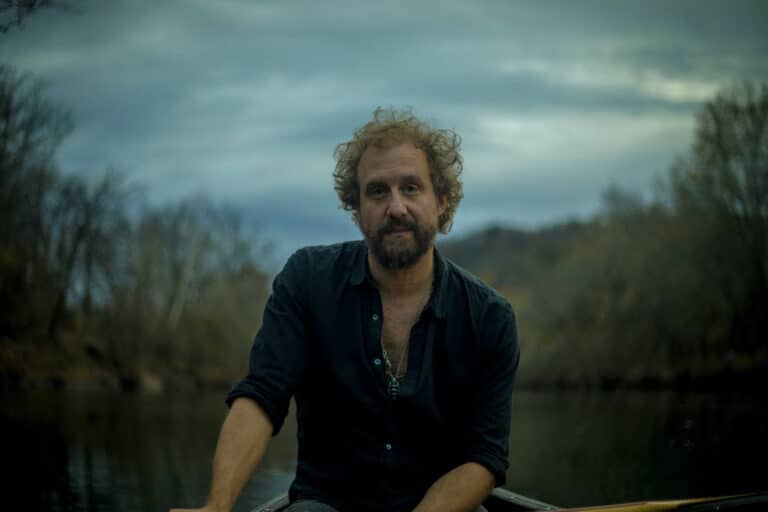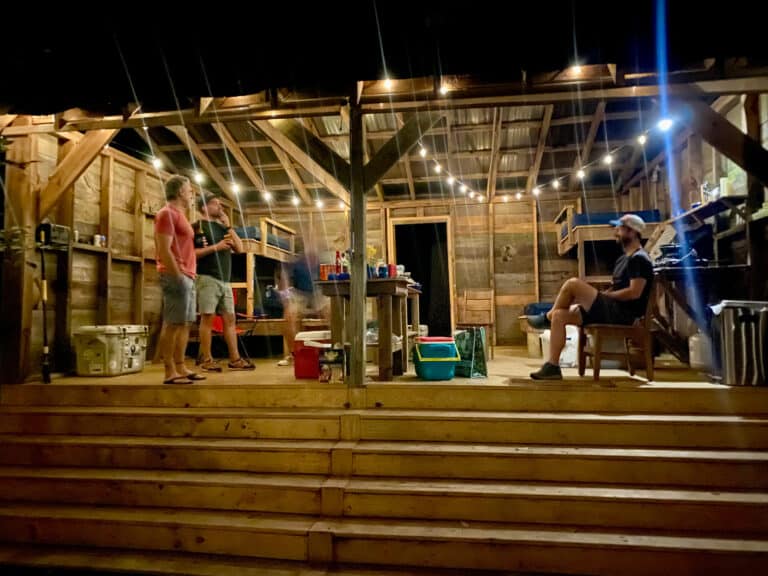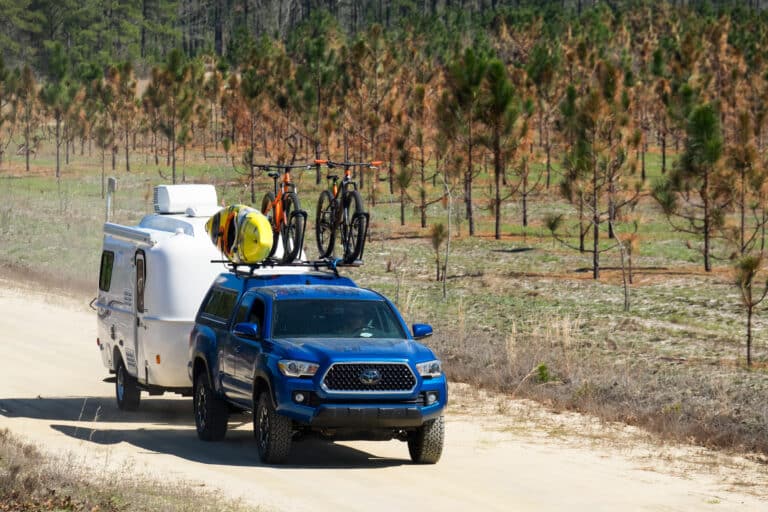by Graham Averill
Just beyond the putt-putt courses of overdeveloped coastal towns are pristine barrier islands that have remained mostly untouched by the tourist infrastructure. Many of these islands can only be reached by boat. Massive crowds converge on mainland beaches, leaving the primitive barrier islands to only the most adventurous beachgoers. Forget the standard romance-novel-on-the-beach summer vacation. Slip into a sea kayak and explore a world of beach camping and flatwater paddling along the South’s wild coastal islands.
——————–
CAPE LOOKOUT NATIONAL SEASHORE • OUTER BANKS, N.C.
Highway 12 runs through the heart of the Outer Banks from Corolla south to Hatteras. After a ferry hop between Hatteras and Ocracoke Island, the highway picks up again, traversing through the middle of Ocracoke Island. Then it just stops. The islands that make up the Outer Banks continue, but the road stops…and so do 99% of the beachgoers. The three islands that continue without road access south of Ocracoke make up Cape Lookout National Seashore, a coastal wilderness that’s only accessible by private boat or ferry. While the rest of the Outer Banks are speckled with small towns and condos and restaurants, Cape Lookout sits completely uninhabited.
“Paddling on the back side of Lookout, you get the feeling you’re in the middle of nowhere,” says Dennis Chadwick, owner of Core Sound Kayaks, an outfitter that runs trips into the Cape from the mainland. “Nobody’s there. You might see someone go by in a kayak at a distance, but basically, you’re out there alone, fending for yourself.”
The Core Sound is a shallow, narrow body of water that separates Cape Lookout from mainland towns like Beaufort and Davis. Lookout itself is made up of a handful of islands, the largest of which are Portsmouth, Core Banks, and Shackleford Banks. Put together, they comprise 56 miles of wave-crashing coastline and marshy maritime forest. No hotels, no bathrooms, no roads, no restaurants—just primitive sea kayaking, surfing, and beach camping. Backcountry permits are free, there are no established trails on the islands, no campgrounds. Paddle where you want, camp where you want, surf where you want. This is coastal wilderness at its best.
——————–
OVERNIGHTER
“There are two things that most people want to see when they come to Cape Lookout,” Chadwick says. “The lighthouse and the horses.”
Assateague doesn’t have a monopoly on wild ponies. Shackleford Banks Island, a nine-mile-long island inundated with maritime forest and beachy coastline, is home to about 115 feral horses that showed up roughly 400 years ago. The National Park Service keeps the horse population at a manageable level. The black and white diamond-painted lighthouse sits on the southern tip of Core Banks directly across from Shackleford, separated only by a skinny channel of ocean.
If the weather is cooperative, you can launch from Harker’s Island and paddle across to Shackleford and the Lighthouse in about an hour. There are easy places to beach the boat on either coast, and the beach camping is superb near the lighthouse. If you want to camp near the ponies, consider pitching a tent near “the horse pen,” where NPS rangers will occasionally herd a few of the horses for standard checkups.
——————–
EXTENDED TRIP
Launch from Harker’s Island, making sure to cruise by Shackleford for the obligatory horse and lighthouse views, then head north on the Core Sound into less traveled territory.
“Probably 95% of the kayakers stick to the lighthouse and Shackleford area,” Chadwick says. “Everything north is pretty much empty.”
Primitive camping is allowed on the beach along the entire length of Cape Lookout, so you can tailor a multi-day trip to suit your paddling skill. The sound is only a few miles wide, so you have the opportunity to conquer serious open water miles but still be within a mile of land on either side. Spend your days paddling through the inlets and islands that hug the inside bank of the barrier islands—just be careful where you decide to land your boat. The Core Banks are dominated by massive growths of cordgrass, which can be a beast to hike through. Keep an eye out for worn paths through the grass, which will lead you to the sandy beaches of the Atlantic coast. Set up camp wherever you like and fall asleep to the sounds of crashing waves against the beach. Wake up early and try your hand at surf kayaking those same breaks, then head back to the west coast of the island and start the process all over again. If you arrange for a shuttle at the small towns of Davis or Atlantic, you can spend more days exploring new territory and never backtrack for a single paddle stroke.
——————–
LOGISTICS
There are public kayak launch sites on Harker’s Island and the Beaufort waterfront, all of which offer a relatively short paddle across the sound to Cape Lookout. Passenger ferries also leave from Beaufort and Harker’s if you want to hitch a ride across the open water. Backcountry permits are free.
Core Sound Kayaks rents boats and runs guided trips into the national seashore. They can also re-supply you anywhere on the islands if you’re taking an extended trip.
Warning: There’s limited fresh water along Lookout’s islands, so be prepared to carry everything you’ll need. There are no services on the seashore, so pack everything you think you’ll need. Fires are allowed below the high tide line along the beach.
——————–
ASSATEAGUE ISLAND NATIONAL SEASHORE • MARYLAND/VIRGINIA
Nobody knows exactly how the wild ponies got to Assateague Island. The most popular theory involves the shipwreck of a Spanish cargo vessel off the coast and some hardy equine swimmers. Regardless of their origin, the ponies have been occupying the barrier island since the 1600s. Roughly 300 of them live on Assateague today, traveling the beaches in small groups and feeding on the marsh grasses of the western bank of the island.
“One of the great highlights of paddling Chincoteague Bay is you get to see the ponies from the water,” says Mitch Mitchell, owner and operator of Coastal Kayaks. “It’s such a tranquil experience, paddling through the salt marsh inlets, watching the ponies graze on the grass.”
The Chincoteague Bay separates Assateague Island from the mainland of Maryland and Virginia, offering kayakers more than 20 miles of shallow waterways for paddling. Small islands and inlets highlight the western bank of Assateague, attracting shore birds of all kinds. Tall marsh grass and patches of maritime forest occupy the western coast, and paddle-in backcountry campsites are spread throughout the length of the island, giving kayakers the opportunity to tailor a multi-day trip to their skill level.
“The further south you head, the prettier it gets,” says Jon Wickert, co-owner of Back to Nature Kayak Adventures. “There are a million little islands to explore as you paddle and it gets less crowded and developed as you go.”
——————–
OVERNIGHTER
Most paddlers launch from Assateague State Park and head to Tingles Island backcountry campsite for a relatively easy overnight adventure. It’s only a few miles from the launch to Tingles Island, but there are a number of smaller marsh islands to explore along the way, including Gull Island, the first small landmass you’ll come to after launching.
“Lots of birds nest there and it’s always full of cormorants, gulls, and brown pelicans,” Wickert says. “It’s awesome to see a couple hundred birds just hanging out and flying all around you. We take school groups there and several kids have freaked out and fallen out of their kayak. It’s really pretty incredible.”
——————–
EXTENDED TRIP
Begin your paddle early in the morning and head for Green Run or Pope Bay toward the Virginia border. From both paddle-in campsites, you’ll be able to hear the waves crashing on the eastern shore as you sleep. It will also be a short walk across the dunes to the Atlantic Coast for a morning swim. This far south, you may have some ponies to contend with, but it’s doubtful you’ll see any other beachgoers. Stash the boats and spend your second day hiking barefoot to State Line campsite, which sits on the beach a stone’s throw from the crashing Atlantic Ocean. Hike back to your boats early the next morning, then spend the day paddling back through the islands of the bay.
——————–
ALTERNATIVE TRIP
Assateague also offers hike-in only campsites along the eastern shore of the island. From the National Park Service parking area, it’s a four-mile hike to Little Levels campsite, which overlooks the beach break, and eight miles further to State Line, the most remote backcountry camping you can find on the island. To get to either destination, you’ll be hiking south along the beach, the white sand dunes rising on your right, the waves crashing to your left.
——————–
DIVERSION
Surf kayaking is king along the 20-mile Atlantic coast of Assateague Island. “The mellow, mushy waves are perfect for a kayak,” says Mitch Mitchell. “Most of Maryland is a beach break, but on Assateague, there’s a sandbar shoal about 150 yards from the beach where the waves break.” And forget about jockeying in a crowded lineup for position. With 20 miles of remote beach front, you’re bound to find a break all to yourself.
——————–
LOGISTICS
The easiest access to Assateague National Seashore is through Ocean City, Maryland. Chincoteague Wildlife Refuge occupies 14,000 acres on the Virginia side of Assateague Island, but offers no overnight camping. Car camping can be had at Assateague State Park as well as inside the National Park, a short drive from Ocean City. Backcountry permits are $4. Coastal Kayaks rents boats and runs guided trips into the national park (www.c-kayak.com). Return to Nature guides short trips around Assateague State Park (www.rtnkayaks.com).
Warning: Be prepared to get eaten alive. “The bugs can be rough,” Mitchell says. “A lot of people can’t handle the bugs for more than a night or two.” Chincoteague Bay is also more exposed than other bay paddling destinations, so the wind usually plays a factor. Fighting a head wind in two-foot chop has ruined many a paddling expedition. And always file a “float plan” with the National Park Service.
——————–
BUMPER TO BUMPER BEACHES
The most pristine seashores of the South Atlantic are surprisingly the most vehicle-friendly. The state of Georgia has issued more beach driving permits on Cumberland Island National Seashore and Wilderness than all of the other developed Georgia beaches combined, including Jekyll, Tybee, and St. Simon’s Islands. Vehicles are also allowed in Assateague, Cape Lookout, and Cape Hatteras National Seashores. Proponents of the drive-thru seashores claim the privilege of driving a car on the beach is the lifeblood of the coastal tourism industry. But environmental groups question the judgment of allowing hundreds of four-wheel-drive trucks to trounce sensitive coastal ecosystems.
The majority of Assateague Island National Seashore’s coastline is open to vehicles, with daily car limits set at 145 on the Maryland side of the island. The National Park Service is under pressure to increase the number of vehicle permits from fishing organizations, while environmental groups want to restrict access because of the damage the vehicles do to the ecosystems of threatened species like the piping plover and sea beach amaranth. Assateague is seeking comments from citizens about the beach driving permit issue.
Cape Hatteras National Seashore (just north of Cape Lookout) is undergoing similar revisions to its beach driving permits. The Southern Environmental Law Center filed an injunction to stop vehicle use of certain sensitive areas on Cape Hatteras, which led to the creation of buffer zones that protect nesting areas of piping plovers and other birds. The injunction also resulted in a ban on night-time driving to protect the loggerhead sea turtles that nest on Hatteras’ beaches.
Loggerhead sea turtles nest on Cumberland Island’s beaches as well, but that hasn’t stopped Georgia’s Department of Natural Resources from issuing 355 beach driving permits—primarily to wealthy island residents and visitors who rent private houses from these island residents.
——————–
EXTENDED TRIP
Even though the barrier island is only three miles from the mainland, public launch sites are limited. If you want to paddle Cumberland, you have to paddle to Cumberland, an endeavor that could take several hours even for the most experienced sea kayaker. Launch from Crooked River State Park early in the morning and pace yourself on the eight to ten mile paddle through the protected waters of Cumberland Sound and the Brickhill River, which will lead you to the north side of Cumberland Island. If the conditions are good, the trip should take four hours. If the winds are nasty, plan on six hours or more. Your ultimate destination is Brickhill Bluff, a paddle-in backcountry campsite located in the more remote stretch of Cumberland with killer sunset views.
“It’s the northernmost campsite on the island, so you’re a good distance from where the ferry lets out,” Bufkin says. “You’re not gonna see a lot of the day trippers—they stick to the south end.”
Since you have a healthy return paddle waiting for you on the back end of your trip, park the boats and traverse Cumberland by foot. Fifty miles of hiking trails crisscross the island’s wilderness and 18 miles of sandy beach dominate the coastline. Check out Roller Coaster Trail, which traverses sandy dunes, palmettos, and live oaks on its way to Lake Whitney. If the winds are mellow, spend a day hiking the miles of coastline and body surfing in the Atlantic Ocean.
——————–
LOGISTICS
There are public launch sites in St. Mary’s on Amelia Island, which makes an ideal launch if you want to camp on the southern end of Cumberland. Otherwise, launch from Crooked River State Park for a combination of sound and river paddling into the island. Southeast Adventure Outfitters will rent kayaks or guide your group on multi-day excursions. The National Park Service limits the number of visitors on Cumberland Island, so be prepared to make reservations up to six months in advance. Camping is limited to seven days. And plan your paddles to and from Cumberland according to the tides. Launch from Crooked River at high tide and follow the tide out, start your paddle back to the mainland on low tide and follow the tide back in.







